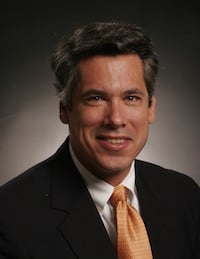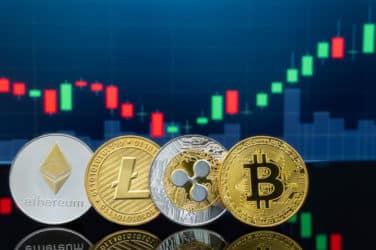Coronavirus, how bad will it get and what should investors do?
By Don Steinbrugge, Agecroft Partners
Equity markets around the world sold off last week because of uncertainty relative the Coronavirus’ impact on the global economy and corporate profits. No one knows how bad the economic impact might be, but the worst case scenario or potential “tail risk” is truly frightening relative to loss of life, contraction in global GDP and implosion in the financial markets. One thing we are confident in is that globally coordinated monetary stimulus will not be very effective in preventing an economic meltdown due to preventative measures in reducing the spread of the virus.
The big questions is what can an investor do? The most important thing is not over react, because we could also see a quick V shaped recovery if the virus is kept under control. Investors should focus on the big picture when monitoring how this virus develops and not overreact to politicians or to the constant barrage of news reports citing new cases in countries around the world. The key statistic to focus on is the rate of growth of infections and not the increase in absolute number. A good way to quantify the rate of growth is the “Rule of 72” which is an easy way to estimate how long it takes something to double in size by dividing 72 by the growth rate. For example, if a country has 2000 infections and reports 200 new infections the previous day, infections grew at a 10% rate over the past 24 hours. At that rate, infections are expected to double every 7.2 days (72 divided by 10 = 7.2). At this growth rate it on would take approximately 10 weeks to reach a million infections.
The growth rates last week in South Korea, Iran and Italy were much higher than 10% per day, which is one of the main reasons the market selloff was so large. However, growth rates are not linear and will change over time as governments implement containment strategies. The good news last week was, although the increase in the “reported” number of new infections was high in China, the growth rate has significantly slowed to less than 1% per day. Many people question China’s integrity in reporting accurate numbers, because China might view the risk of economic contraction and social instability as greater than the virus itself. If China’s numbers are accurate it gives hope that the virus can be contained. We will have a much better idea over the next 4 to 6 weeks of where things are headed by monitoring virus growth rate data from democratically elected governments.
In the meantime it is important to remember that history has proven that most investors are terrible at predicting the direction of the market. To do so successfully requires two correct decisions: when to get out and when to get back in. Investors’ emotions often drive their investment decisions. As a result, they typically buy near market peaks and exit near market bottoms. Major corrections in the capital markets are a risk that investors must always consider. Experience shows the question is not if a major correction will happen, but when.
Events of the past couple of decades have led investors to expect markets to rebound quickly from a major correction. Seemingly forgotten is the worst sell-off of the US stock market, which began in 1929 and resulted in a decline of almost 90 per cent. It took 23 years to recover. For those tempted to dismiss this as outdated data, take note that the Nikkei index hit an all-time high of approximately 39,000 in 1989. 28 years later it is still approximately 40 per cent below its all-time peak.
Instead of trying to time the market, investors should construct a diversified portfolio that can withstand market turbulence. This can help avoid desperate reactions which typically include selling at market bottoms. Unfortunately, most investors significantly underestimate the tail risk of their portfolios.
When building out a diversified portfolio, many investors seek to maximize risk-adjusted returns for a multi-asset class portfolio. Calculations to determine optimal asset allocations require assumptions for return, volatility and correlations (relative movement) for each asset class. These assumptions are based on a combination of long-term historical returns for an asset class, current valuation levels, and economic forecasts. Together, these variables can be applied to optimization models to help determine the asset allocation with the highest expected return for a given level of volatility.
Unfortunately, these models have proven to break down during severe market sell-offs. This was a painful lesson learned in 2008 when almost all asset classes declined simultaneously. The reason these models break down is because two of the inputs (correlation and volatility) are dynamic. When markets sell off, correlations among long only investment managers and across various asset classes tend to rise significantly. When combined with a spike in volatility, this creates much more tail risk than originally perceived. It is important to stress test portfolios using expected correlations and volatilities that would be experienced during a major market sell-off.
For those investors that currently have an allocation to hedge funds, it is important to remember that hedge funds are not an asset class but a fund structure comprising of numerous investment strategies. Many hedge fund strategies have very low correlations to capital markets benchmarks, and some are, or have the potential to become, negatively correlated during a market sell-off. This was seen in 2008 when a few hedge fund strategies posted positive returns. I will be writing about some of these diversifying strategies that reduce tail risk across a diversified portfolio in upcoming articles.
About the author: Donald A. Steinbrugge, CFA – Founder and CEO, Agecroft Partners
Don is the Founder and CEO of Agecroft Partners, a global hedge fund consulting and marketing firm. Agecroft Partners has won 38 industry awards as the Hedge Fund Marketing Firm of the Year.Don frequently writes white papers on trends he sees in the hedge fund industry, has spoken at over 100 hedge fund conferences, has been quoted in hundreds of articles relative to the hedge fund industry and has done over 100 interviews on business television and radio.
Don is also chairman of Gaining the Edge-Hedge Fund Leadership Conference; consider one of the top conferences in the hedge fund industry. All profits from the conference are donated to charities that benefit children.
Highlighting Don’s 35 years of experience in the investment management industry is having been the head of sales for both one of the world’s largest hedge fund organizations and institutional investment management firms. Don was a founding principal of Andor Capital Management where he was Head of Sales, Marketing, and Client Service and was a member of the firm’s Operating Committee. When he left Andor, the firm ranked as the 2nd largest hedge fund firm in the world. Previous to Andor, Don was a Managing Director and Head of Institutional Sales for Merrill Lynch Investment Managers (now part of Blackrock). At that time MLIM ranked as one of the largest investment managers in the world. Previously, Don was Head of Institutional Sales and on the executive committee for NationsBank Investment Management (now Bank of America).
Don is a member of the Board of Directors of Help for Children (Hedge Funds Care), Virginia Home for Boys and Girls Foundation and the Child Savers Foundation. In addition he is a former Board of Directors member of the University of Richmond’s Robins School of Business, The Science Museum of Virginia Endowment Fund, The Richmond Ballet (The State Ballet of Virginia), Lewis Ginter Botanical Gardens, The Hedge Fund Association and the Richmond Sports Backers. He also served over a decade on the Investment Committee for The City of Richmond Retirement System.






